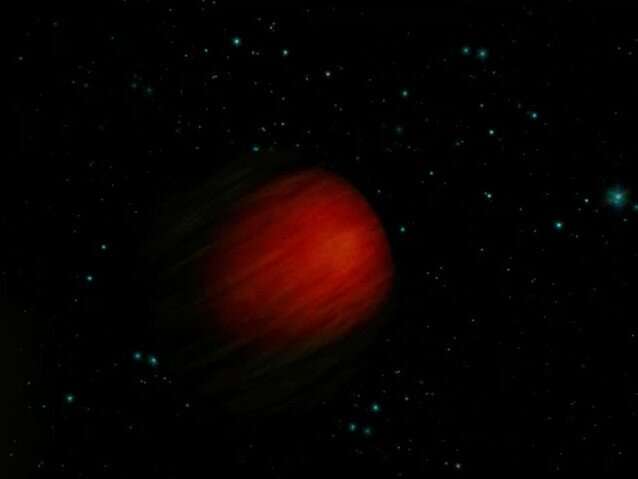The James Webb Space Telescope has verified that the atmospheres of giant planets exhibit significant variations.
A distinct pattern is observed among the gas giants revolving around the sun, with a lower percentage of “heavy” elements present in the atmosphere of more massive planets, apart from hydrogen and helium. However, a recent study by an international team of astronomers revealed that the atmospheric compositions of giant planets beyond the solar system differ from this pattern.

Utilizing NASA’s James Webb Space Telescope (JWST), the researchers detected an excess amount of carbon and oxygen in the atmosphere of exoplanet HD149026b, a “hot Jupiter” orbiting a star similar to our sun. This super-abundance of heavy elements in a planet of its mass is much higher than what scientists anticipated. Moreover, the diagnostic carbon-to-oxygen ratio of HD149026b, also known as “Smertrios,” is higher than that of our solar system.
The recent study titled “High atmospheric metal enrichment for a Saturn-mass planet” published in Nature on March 27 presents crucial initial findings for the examination of a broad range of exoplanets, in order to identify statistical trends, as well as to gain insights into planet formation, according to the researchers.
The study reveals that every giant planet possesses unique characteristics, and thanks to JWST, these differences are now becoming apparent. “In this paper, we have determined how many molecules there are relative to the primary component of the gas, which is hydrogen, the most common element in the universe. That tells us quite a lot about how this planet formed,” remarked Jonathan Lunine, a co-author of the study and the David C. Duncan Professor in the Physical Sciences in the College of Arts and Sciences.
According to Jacob Bean, the lead author of the paper and a professor of astronomy and astrophysics at the University of Chicago, the massive planets in our solar system exhibit an almost flawless correlation between their overall composition, atmospheric composition, and mass. However, the overall compositions of exoplanets vary considerably, and until the analysis of HD149026b, scientists were uncertain about the diversity of their atmospheric compositions.
The study has provided clear evidence that the atmospheric compositions of giant exoplanets differ significantly from the pattern observed in the solar system planets. “Giant extrasolar planets show a wide diversity in atmospheric compositions in addition to their wide diversity of overall compositions,” Bean stated.
Smertrios, a “hot Jupiter” exoplanet orbiting a star similar to the Sun, has a much higher level of heavy elements in its atmosphere compared to its mass, as per the statement of Lunine. Even though Smertrios is as massive as Saturn, its atmosphere has up to 27 times more heavy elements relative to hydrogen and helium than Saturn’s.
The ratio of heavy elements or “metallicity,” although including several non-metal elements, is valuable in comparing planets to their home star or other planets in the system, according to Lunine. The carbon-to-oxygen ratio in a planet’s atmosphere is another critical measurement that reveals the original solids recipe in a planetary system. Smertrios has a carbon-to-oxygen ratio of approximately 0.84, higher than that in our solar system. These findings indicate that a carbon-rich disk with abundant solids contributed to the formation of Smertrios.
While an abundance of carbon might be favorable for the possibility of life, a high carbon-to-oxygen ratio implies less water on a planet, which is problematic for life as we know it. Lunine plans to examine five additional giant exoplanets over the following year using JWST.
Bean emphasizes that much more research is needed before astronomers can draw any conclusions regarding the composition of giant planets or systems with several giant or terrestrial planets. “The origin of this diversity is a fundamental mystery in our understanding of planet formation,” Bean said. “Our hope is that further atmospheric observations of extrasolar planets with JWST will quantify this diversity better and yield constraints on more complex trends that might exist.”
Do not forget to share your opinion with us to provide you with the best posts !



0 Comments